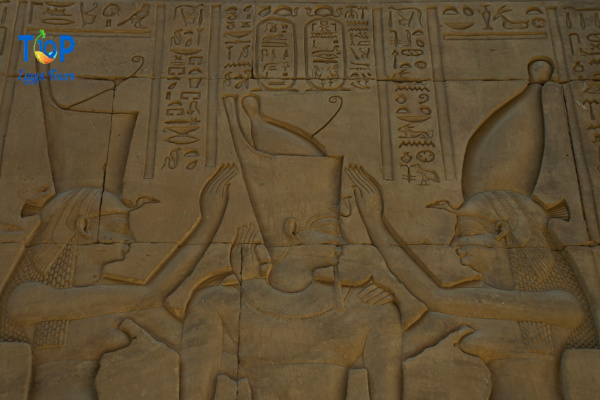Goddess Nekhbet, Immerse yourself in the enchanting world of Ancient Egyptian mythology as we delve into the realm of Goddess Nekhbet, the divine guardian and protector. Revered as a powerful avian deity, Nekhbet’s presence permeated the ancient civilization, offering guidance, protection, and maternal care. Join us on a journey filled with awe and wonder as we explore the fascinating tales and symbolism surrounding this revered Egyptian goddess.
The Origins and Symbolism of Nekhbet divine guardian and protector:
Nekhbet, also known as Nekhebet, was closely associated with the vulture, a sacred bird symbolizing motherhood and protection. The Egyptians believed that Nekhbet had been worshiped by early predynastic kings and queens. Often depicted as a woman wearing the white crown of Upper Egypt surmounted by the emblem of the vulture, Nekhbet exuded regal grace and an unwavering sense of watchfulness.
The Role of Nekhbet in Ancient Egyptian Society:
Protectors of Pharaoh and Upper Egypt:
Goddess Nekhbet held a prominent role in safeguarding the pharaoh, the ruler of ancient Egypt, and the land of Upper Egypt. As the patroness of sovereignty, she was seen as the divine guardian, ensuring the safety and well-being of the royal lineage. Nekhbet’s watchful eyes were believed to provide wisdom and protection, guiding the pharaoh’s actions in times of peace and war.
Maternal and Nursing Deity:
With her nurturing qualities, Nekhbet symbolized motherhood and often appeared as a celestial nurse, cradling the royal children within her wings. She was seen as a protective force, offering solace and guidance to both the pharaoh and the people of Egypt. Nekhbet’s presence embodied the love and care bestowed upon the kingdom, fostering a sense of unity and stability.
Worship and Cult of Nekhbet:
Goddess Nekhbet’s influence resonated throughout the Egyptian society, with temples dedicated to her worship in various cities, including Hierakonpolis and Nekheb (El Kab). The sacred emblem of Nekhbet, the vulture, could be found adorning crowns, jewelry, and even the walls of tombs, symbolizing the deity’s watchful protection.
Legacy and Influence:
While the direct worship of Goddess Nekhbet gradually diminished with the decline of Egyptian civilization, her symbolic presence remains intact. The vulture motif associated with Nekhbet continued to hold significance in the ancient world and beyond, often appearing as an emblem of protection and divine guardianship. Today, remnants of Nekhbet’s awe-inspiring legacy can be found in archaeological sites and ancient artifacts, evoking a sense of wonder and admiration for this majestic goddess.
Goddess Nekhbet, the vigilant protector and nurturing figure of Ancient Egyptian mythology, exemplified strength, wisdom, and maternal care. As we venture into the rich tapestry of Egyptian culture and beliefs, let us honor the enduring legacy of Nekhbet, whose watchful eyes and outstretched wings embraced the pharaoh, the people, and the land of Upper Egypt.



Comment (0)